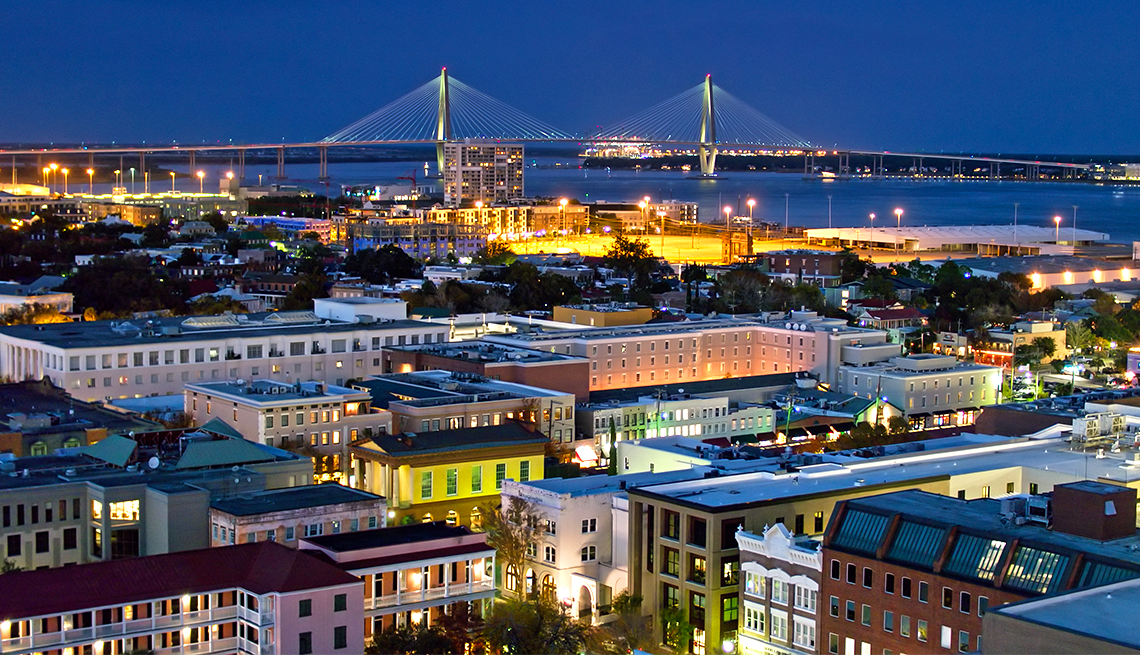If you’re seeking great seafood, Simply Seafood on Johns Island is a highly rated choice. The menu is full of seafood boils, from garlic blue crab to crawfish. Oysters, shrimp and even alligator bites help round out the offerings. Johns Island, South Carolina’s largest island, is about a 25-minute drive west of downtown Charleston. Three rivers surround the 84-square-mile barrier island, which is known for its many farms and for the Angel Oak Tree, a southern live oak estimated to be at least 300 years old.
If you’re not familiar with Charleston chewies, best described as a brown sugar blondie, make sure you get the treat while you’re in town. Charlestonites usually point out-of-towners to one place to pick them up: Daddy’s Girls Bakery. The family-owned bakery got its start selling treats in barbershops and beauty salons. Now it sells cakes, cupcakes and the famous chewies from a North Charleston brick-and-mortar store.
What to do
The Gullah community heavily influences Charleston’s culture, including its food, language and folklore. On Alphonso Brown’s two-hour Gullah Tours ($25 per person), he teaches visitors about Gullah history and notes significant contributions by Black Americans in the Charleston area. Brown is fluent in Gullah and introduces travelers to the Gullah language. He also includes notable stops such as Denmark Vesey’s home, an area that was part of South Carolina’s underground railroad, and a stop at Mother Emanuel AME Church, the oldest AME church in the South.
If you’re interested in using the International African American Museum’s Center for Family History as a genealogy resource, consider visiting the College of Charleston’s Avery Research Center for African American History and Culture to further your studies. The center holds historical records for a number of churches, funeral homes and families, as well as manuscripts and other documents from civil rights activists from the greater Charleston area. Self-guided tours are available. Guests are encouraged to register in advance, but admission is free. The center provides chairs for people who cannot stand for long periods.
Joseph Fields is a third-generation Gullah farmer who grows certified organic fruits and vegetables on his 50-acre farm. During strawberry season (April to June), Fields offers you-pick strawberries. For everything else, visit Fields’ nephew’s farm stand on the property, called Fields Farm Produce Market. Devonne Hammond sells his uncle’s and other low-country farmers’ seasonal produce, including muscadines, cucumbers and tomatoes. He also sells local honey, coffee, meat and more. The farm stand is wheelchair accessible. The farm and farm stand are on Johns Island, a 24-minute drive from downtown Charleston.
































































